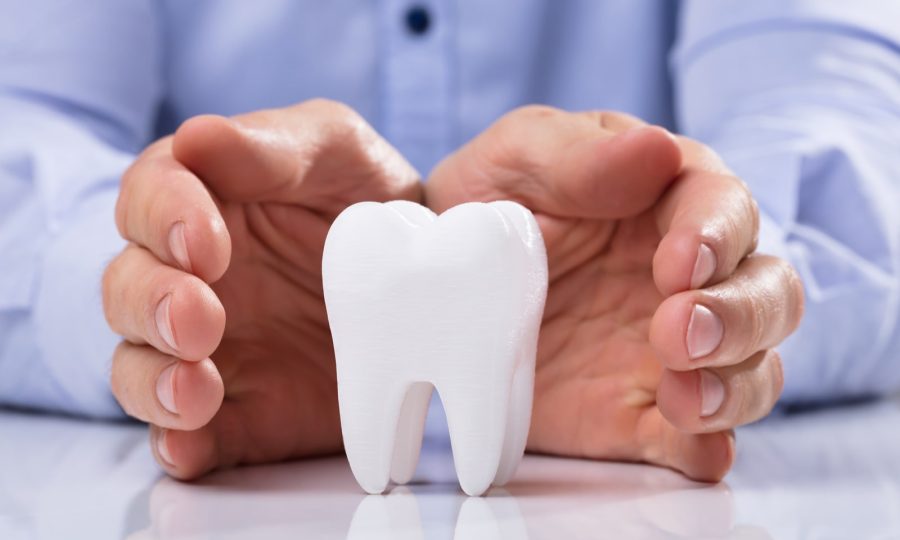What is the Best Way to Replace a Missing Tooth?
If you’re an adult missing one or multiple teeth, you may not be aware of the tooth replacement options available through your dentist. Missing teeth can not only change the way your smile looks but can have other impacts such as:
- Shifting teeth
- Bite irregularities
- Difficulty chewing
- Speech issues
Let’s go over some of the causes of missing teeth and how they can be replaced.
Causes of Missing Teeth
People lose teeth for many different reasons. Each one can change the way a dentist approaches your specific tooth replacement. It’s good to know how tooth loss happens and how to describe your condition to the dentist when they ask for your health history.
Gum Disease
Gum disease, also known as periodontitis, is an infection caused by bacterial plaque that builds up on your teeth. When plaque stays on your teeth for a long time, it hardens into a substance known as tartar.
Tartar damages the soft tissue and bone that holds your tooth tightly to your gum. This damage can cause teeth to become loose and decay. You can prevent gum disease by:
- Brushing your teeth twice a day
- Flossing after you brush
- Getting regular dental checkups
Injury
Teeth can go missing because of injury. Your teeth are strong and covered in hard enamel, but an injury can cause them to chip or crack. These traumatic injuries can include high impact to the face and teeth or chewing on a hard substance that causes the tooth to break. These injuries can cause:
- Partial tooth cracks
- Fractured roots
- Tooth intrusions
Genetics
Certain genetic factors can mean new teeth don’t grow after baby teeth fall out or teeth don’t develop at all. This condition is known as teeth agenesis. The three most common genetic causes of missing teeth are:
- Hypodontia: when 1-5 adult teeth don’t form after baby ones fall out
- Oligodontia: when 6 or more teeth never grow
- Anodontia: when adult teeth don’t grow at all
Smoking
Smoking can weaken your gums and, similarly to gum disease, make them unable to hold on to your teeth, causing them to fall out. An estimated 30-50% of gum disease cases are caused by smoking. Smoking can also cause oral cancer.
Diabetes
Diabetes raises your body’s sugar levels. This sugar increase impacts your saliva and can cause gum diseases like gingivitis. The sugar in your saliva can help bacteria grow and diminish your body’s ability to fight infections, which can cause tooth loss.
Tooth Replacement Options
There are three common tooth replacement options your dentist can offer. Each option is different in terms of cost, time, and effectiveness. Your dentist will go over these options to find the right one for you.
Dental Implants
Dental implants replace your missing tooth with an artificial one through oral surgery. Dental implants are widely known as a long-lasting solution to missing teeth. The most common procedure for inserting a dental implant includes:
- X-rays of your jawbone and surrounding teeth and a comprehensive plan
- Placing a titanium post into your gum and jawbone where your missing tooth was
- Waiting for your gum to heal and the titanium post to bond with your jawbone
- Attaching an “abutment” to the titanium post to attach to the artificial tooth
- Placing the artificial tooth on the abutment and fitting the tooth seamlessly in your mouth
It usually takes a few appointments to plan, insert, fit, and care for your new dental implant. The entire process can take about 6 months to complete.
Dental Bridges
Your dentist could insert a dental bridge if you have healthy teeth beside the space where you’re missing a tooth. A dental bridge consists of an artificial tooth supported by crowned teeth on either side.
A bridge typically consists of three teeth: the two crowns with the artificial tooth in the middle. Your dentist makes a mold of your teeth and bite, so your artificial teeth look and feel as natural as possible. Then, your dentist shaves down the healthy teeth beside the gap so they can be capped with crowns.
Dental bridges are typically less expensive but don’t last as long as dental implants.
Removable Partial Dentures
If you need to replace all your teeth due to decay or a traumatic injury, your dentist may recommend full dentures. However, your dentist may suggest removable partial dentures to replace one or multiple missing teeth. These become an option if the teeth surrounding a gap aren’t strong enough for a dental bridge or if the gums and jaw can’t handle a dental implant.
Partial removable dentures can consist of one or more artificial teeth attached to a metal device similar to a retainer. The dentures are fitted to seamlessly rest with your other teeth.
Is Tooth Replacement Right for You?
Nearly everybody loses teeth as they grow older, but the tooth fairy stops visiting when you’re an adult. Instead, you get to see a dentist who can go over tooth replacement options to find the right solution for you.
For all your dental needs, including tooth replacement, cosmetic dentistry, or Invisalign, your dentist has the years of experience and dedication you need to ensure your smile is healthy and happy.










